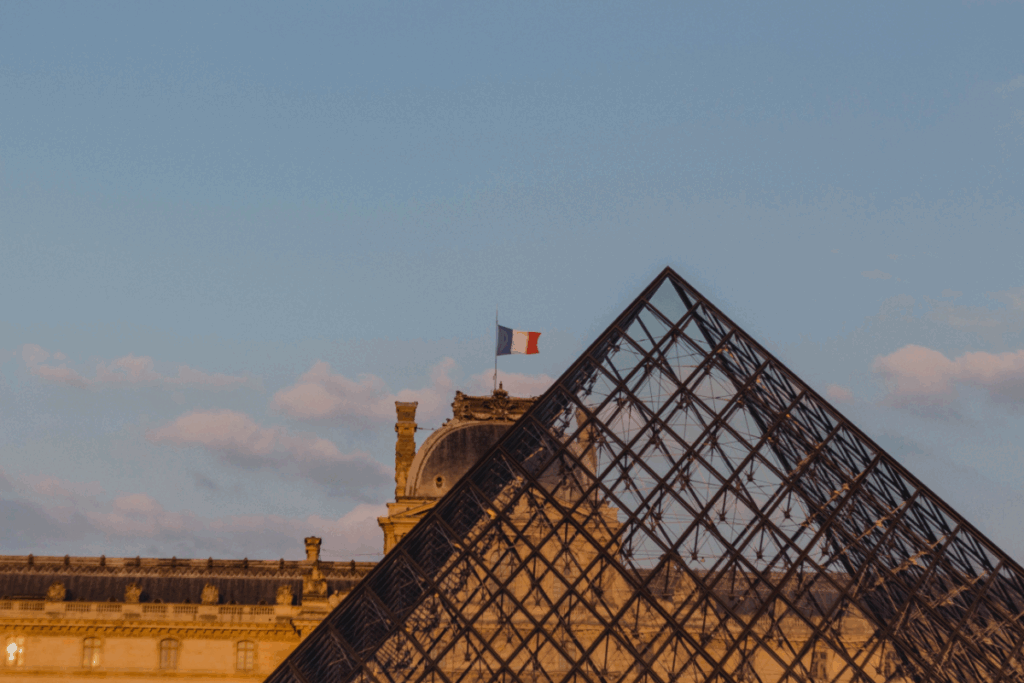Masked Thieves Strike in Daylight, Stealing Priceless Artifacts
The Louvre Museum in Paris remains closed after a brazen daylight robbery in which masked thieves stole royal jewelry of “inestimable cultural and historical value.” French officials have described the theft as a seven-minute operation that exposed deep flaws in the security of one of the world’s most visited museums.
Shortly after opening on Sunday morning, two men used a truck-mounted lift to access a second-floor window leading into the Galerie d’Apollon — home to France’s crown jewels and imperial treasures. They smashed display cases and seized eight pieces of jewelry before fleeing toward a nearby highway on high-powered scooters. Two stolen artifacts, including the crown of Empress Eugénie, wife of Napoleon III, were later recovered near the museum.
Police are searching for four male suspects, while forensic teams are analyzing fingerprints and material left behind on the lift. Justice Minister Gérald Darmanin said the incident represented “a failure” of public security. “People were able to park a furniture hoist in the middle of Paris, get people up it in several minutes to grab priceless jewels,” he told France Inter radio.
A History of Thefts at the World’s Most Famous Museum
While the robbery shocked France, it was not the Louvre’s first high-profile breach. Over the past century, the museum has faced several notorious thefts — including the 1911 disappearance of the Mona Lisa.
In that incident, Italian worker Vincenzo Peruggia simply walked into the museum wearing his old uniform and removed the painting from its frame, hiding it under his smock. The theft, unnoticed for more than a day, transformed Leonardo da Vinci’s portrait from a relatively obscure work into the world’s most famous painting overnight.
The museum’s collection has also been repeatedly targeted in later decades. In 1976, three masked men climbed scaffolding to steal King Charles X’s diamond-studded sword from the same Apollo Gallery struck this week — a crime that remains unsolved. Two 16th-century suits of Italian armor disappeared in 1983 and resurfaced only in 2021. In 1990, thieves cut a Renoir painting from its frame in broad daylight, prompting a crisis in museum security.
Long-Standing Vulnerabilities and Urgent Reforms
The latest heist comes amid growing concern over the Louvre’s aging infrastructure and strained staff resources. Earlier this year, a leaked letter from Louvre president-director Laurence des Cars warned France’s culture ministry about “degraded spaces” and “outdated technical equipment” compromising both safety and preservation.
French President Emmanuel Macron has pledged an $834 million renovation project aimed at modernizing the museum over the next decade, including a dedicated room for the Mona Lisa, improved climate control, and upgraded security systems. But staff say the overhaul cannot come soon enough.
In June, Louvre employees staged a walkout over “unmanageable crowds, chronic understaffing and untenable working conditions.” The theft has reignited frustration among workers who argue that years of budget cuts and visitor surges have left the institution vulnerable.
National Embarrassment and Political Fallout
The Louvre’s closure has drawn sharp criticism from across France’s political spectrum. Far-right leader Jordan Bardella called the heist “an unbearable humiliation for our country,” while conservative lawmaker Éric Ciotti accused the government of failing to protect France’s cultural treasures.
Former president François Hollande urged calm, calling for greater international cooperation to track organized art theft networks. He suggested that the crime might have been orchestrated by groups operating abroad and warned that cultural symbols like the Louvre could become targets for geopolitical manipulation.
President Macron described the incident as “an attack on a heritage we cherish because it is our history.” Authorities have launched a full review of museum security across France, and police are coordinating with Interpol to trace the stolen jewels before they vanish into the global art black market.
For many in France, the robbery has struck an emotional chord reminiscent of the 2019 Notre-Dame fire. As Darmanin put it, “Having jewels stolen from the Louvre in such an extraordinary way hurts — it gives a very negative image of France.”


